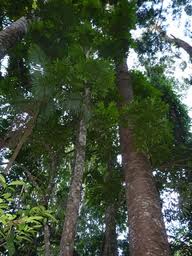1 - 4 December 2012
Coffin Bay is famous for its oysters but
the national park that shares its name is a whole lot more exciting than the
oysters.
Disappointingly the first campground is a
dud. It smells (Yangie Bay doesn’t get
much movement), the bees are a major problem and it just lacks any kind of
appeal whatsoever. To make matters worse
we discovered this VERY late in the afternoon and decided to head deeper into
the national park to find a better spot.
But we couldn’t make it up the first sand
hill towing our heavy trailer so we headed back into town, much to Isobel’s
excitement. We stayed at the caravan park for the next 3 days and explored the
national park from there. Isobel was pleased to have a playground, no bees and
running water. (And her mum was pleased
with the cleanest amenities block and a new camp kitchen!).
Gunyah Beach features on many postcards of
the area and we were not disappointed by the journey to reach it. We crossed a
dune system like none we’d ever seen before. I drove back and it was the best
fun I’ve ever had driving a car! What a
hoot.
We had a BBQ on the beach as the waves
crashed in, the kids built sand castles, and Simon got to try out his new surf
fishing rod. It was blowy and cold but a
perfect start to our Coffin Bay adventures.
While here I read that people have always
said that the Great Australian Bight starts at Cape XXX which I suspect I could
just see in the far distance further south - down near the Whalers Way. So it was an unexpected surprise we were already touring the Bight!
We went to Cape Anxious and loved watching the waves crash on the low
rocks between it and Golden Island. The beach at Anxious Bay was simply
stunning.
The next day we drove up the Seven Mile
Beach to reach the north-western parts of the park but we left too late to see
any of it and were quite happy to settle with another beach BBQ. It was even colder but at least we got some
exercise in after lunch to warm ourselves! (check out photos).
Hugo did lots of exploring on his own and
said to me later that at one point, if he didn’t look at the water on his
right, or the trees on his left he thought he’d woken up in Africa in the
Sahara.
Hugo LOVED these sand dunes and didn’t tire
going up them so he could pelt down them. The last time he came down them he
decided to roll and ended up with a body full of sand – including up his nose
and in his ears and he still smiled.
Otto was quite taken with the beached whale
calf we found, but Simon almost dry reached when he dutifully got out the car to
take the photo the kids wanted.
As we no longer needed to worry about an
incoming tide, we could stop and explore more parts of the national park (most
things were not signposted in anyway).
We stopped at one place and discovered a beautiful, beautiful quiet bay
teeming with marine life. Otto, Isobel
and I took a walk and found shells and fish, crabs, a beautiful jelly fish (and
a plastic bag). Hugo and Simon did some
more fishing but still didn’t have any luck.
We saw salt lakes, more beautiful hidden
bays, countless sand dunes and we saw for the first time emus on sand
dunes! We even managed to get one on
camera too.
Back home we met another family with a Trak
Shak (our trailer) with 3 kids all the same age as ours. They were a lovely family and Hugo and their
eldest boy went fishing together the next morning on the town jetty (with
Kael’s dad) and Hugo caught more fish!
By the time we’d packed up our trailer they had a bucket load of fish. It’s hard to tell what Hugo was most excited
about; his new friend or catching a salmon after having fought two cormorants
also in the hunt for a feed!
To finish our Coffin Bay adventures it was
only fit that we tried their oysters. I
bought them at the local shop that was the milk bar, bottle-O, servo and oyster
bar! They shucked them then and there
and gave us a dozen oysters with lemon and parsley for $11 (a real
bargain). They were the best oysters
I’ve ever tasted and were so creamy. All
the kids tried them but have decided the oysters are not really for them.
Simon and I are already plotting where
we’ll camp next time we visit this neck of the woods. We may not be trying oysters again, but we
will be back to see more of Coffin Bay National Park.































